Music
Trailers
DailyVideos
India
Pakistan
Afghanistan
Bangladesh
Srilanka
Nepal
Thailand
StockMarket
Business
Technology
Startup
Trending Videos
Coupons
Football
Search
Download App in Playstore
Download App
Best Collections
Technology
On Thursday, the White House said that it will likely soon adjust previous guidelines that discouraged non-health workers from wearing face masks. The change would be issued as &guidance& from the CDC, but according to the president—who continues to hesitate at exerting federal power during the COVID-19 crisis—it will not be made mandatory.
Supplies of medical-grade masks are still running critically low in many places hard hit—or soon to be hard hit—by the coronavirus. Due to ongoing shortages, the new guidance is expected to concern cloth and non-medical face coverings only.
In ThursdayWhite House press briefing, Dr. Deborah Birx, coronavirus task force response coordinator, stressed that the updated guidance was an &additive& protective measure and not meant as a substitute. &When the advisory comes out… if it comes out… it will be an additive piece,& Birx said.
Birx suggested that the White House and CDC hesitated to offer the new mask advice due to concerns that people would relax critical social distancing measures that will prove key to U.S. containment efforts.&We don&t want people to feel like ‘oh i&m wearing a mask, I&m protected and I&m protecting others.'&
As Birx explained the thinking behind the new precaution of cloth masks, Trump offered his own unfounded interpretation of the information. &If people wanted to wear them, they can,& Trump said. &In many cases, the scarf is better, itthicker& he added, incorrectly.
The new guidance is expected in the coming days and will come from the Centers for Disease Control and Prevention (CDC). In memos obtained by the Washington Post, the CDC began considering the cloth mask recommendation due to evidence that people without symptoms are transmitting the virus. A draft copy of the policy states that the CDC &… recommends the community use of cloth masks as an additional public health measure people can take to prevent the spread of virus to those around them.&
On Wednesday, Los Angeles Mayor Eric Garcetti urged residents to cover their faces in public while making a point to stress that N95 and surgical masks go straight to medical workers.
A grassroots effort of crafters is already springing up around the country to create home-sewn masks for health workers unable to get proper PPE and others who want to take the protective measure. Many online resources offer patterns and how-to resources on mask construction and even no-sew methods. New federal recommendations around cloth masks could also provide an opportunity for businesses to offer helpful resources in the fight against COVID-19, as many companies make creative moves to stay afloat.
While mask-wearing is routine even outside of pandemic times in countries like Japan and South Korea, Western countries are generally less comfortable with the practice. Social norms may be compounded by confusing messaging from officials who urged Americans to donate medical masks to health workers at the same time as suggesting the masks do not provide protection against the virus in everyday situations.
&Seriously people- STOP BUYING MASKS!& U.S. Surgeon General Jerome Adams tweeted in late February. &They are NOT effective in preventing general public from catching #Coronavirus, but if healthcare providers can&t get them to care for sick patients, it puts them and our communities at risk!&
That messaging may have proved expedient in the earliest days of the crisis as Americans hoarding masks for personal use could worsen an already constricted supply of personal protective equipment for medical personnel.
Cloth masks are less effective than medical masks, but their use, even if imperfect, is better than nothing at helping limit the spread of the virus. In one prescient small 2013 study examining the efficacy of homemade masks in the event of a flu pandemic, researchers recommended cloth masks &be considered only as a last resort… but it would be better than no protection.&
That research, published by Cambridge University Press, found that both homemade cloth masks and traditional surgical masks &significantly& reduced the amount of potentially infectious droplets expelled by the wearer, though surgical masks were three times better for preventing transmission. Because homemade masks are less disposable than medical masks, they should be washed after use to get rid of infectious droplets.
On Thursday, health officials were careful to stress that using a mask does not mean that itokay to relax physical distancing measures.
&Just remember itnot a substitute for everything that we&re asking people to do!& Birx said.

- Details
- Category: Technology Today
AWS today announced that its DeepComposer keyboard is now available for purchase. And no, DeepComposer isn&t a mechanical keyboard for hackers but a small MIDI keyboard for working with the AWS DeepComposer service that uses AI to create songs based on your input.
First announced at AWS re:Invent 2019, the keyboard created a bit of confusion, in part because Amazonannouncement almost made it seem like a consumer product.
DeepComposer, which also works without the actual hardware keyboard, is more of a learning tool, though, and belongs to the same family of AWS hardware like DeepLens and DeepRacer. Itmeant to teach developers about generative adversarial networks, just like DeepLens and DeepRacer also focus on specific machine learning technologies.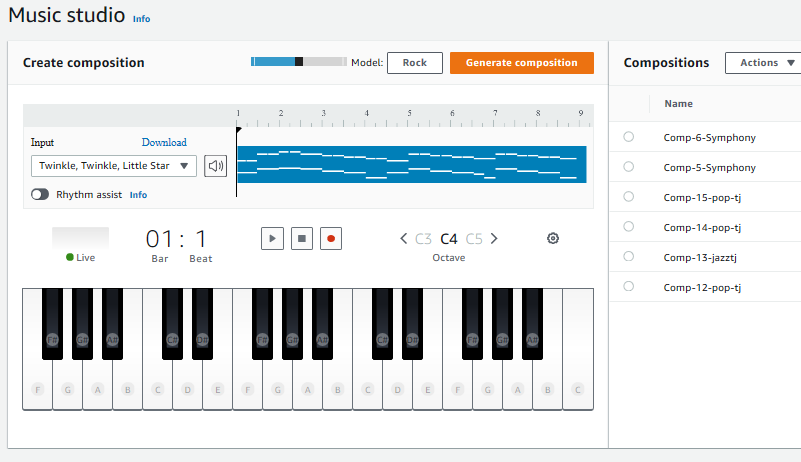
Users play a short melody, either using the hardware keyboard or an on-screen one, and the service then automatically generates a backing track based on your choice of musical style.
The results I heard at re:Invent last year were a bit uneven (or worse), but that may have improved by now. But this isn&t a tool for creating the next Top 40 song. Itsimply a learning tool. I&m not sure you need the keyboard to get that learning experience out of it, but if you do, you can now head over to Amazon and buy it.
- Details
- Category: Technology Today
Read more: You can now purchase AWS' $99 DeepComposer key-board
Write comment (97 Comments)The emergence of the novel coronavirus has left the world in turmoil. COVID-19, the disease caused by the virus, has reached virtually every corner of the world, with the number of cases exceeding a million and the number of deaths more than 50,000 worldwide. It is a situation that will affect us all in one way or another.
With the imposition of lockdowns, limitations of movement, the closure of borders and other measures to contain the virus, the operating environment of law enforcement agencies and those security services tasked with protecting the public from harm has suddenly become ever more complex. They find themselves thrust into the middle of an unparalleled situation, playing a critical role in halting the spread of the virus and preserving public safety and social order in the process. In response to this growing crisis, many of these agencies and entities are turning to AI and related technologies for support in unique and innovative ways. Enhancing surveillance, monitoring and detection capabilities is high on the priority list.
For instance, early in the outbreak,Reuters reported a case in China wherein the authorities relied on facial recognition cameras to track a man from Hangzhou who had traveled in an affected area. Upon his return home, the local police were there to instruct him to self-quarantine or face repercussions. Police in China and Spain have also started to use technology to enforce quarantine, with drones being used to patrol and broadcast audio messages to the public, encouraging them to stay at home.People flying to Hong Kong airport receive monitoring braceletsthat alert the authorities if they breach the quarantine by leaving their home.
In the United States, a surveillance company announced that its AI-enhanced thermal cameras can detect fevers, while in Thailand, border officers at airports are already piloting abiometric screening system using fever-detecting cameras.
Isolated cases or the new norm?
With the number of cases, deaths and countries on lockdown increasing at an alarming rate, we can assume that these will not be isolated examples of technological innovation in response to this global crisis. In the coming days, weeks and months of this outbreak, we will most likely see more and more AI use cases come to the fore.
While the application of AI can play an important role in seizing the reins in this crisis, and even safeguard officers and officials from infection, we must not forget that its use can raise very real and serious human rights concerns that can be damaging and undermine the trust placed in government by communities. Human rights, civil liberties and the fundamental principles of law may be exposed or damaged if we do not tread this path with great caution. There may be no turning back if Pandorabox is opened.
In a public statement on March 19, the monitors for freedom of expression and freedom of the media for the United Nations, the Inter-American Commission for Human Rights and the Representative on Freedom of the Media of the Organization for Security and Co-operation in Europe issued a joint statement on promoting and protecting access to and free flow of information during the pandemic, and specifically took note of the growing use of surveillance technology to track the spread of the coronavirus. They acknowledged that there is a need for active efforts to confront the pandemic, but stressed that &it is also crucial that such tools be limited in use, both in terms of purpose and time, and that individual rights to privacy, non-discrimination, the protection of journalistic sources and other freedoms be rigorously protected.&
This is not an easy task, but a necessary one. So what can we do?
Ways to responsibly use AI to fight the coronavirus pandemic
- Data anonymization:While some countries are tracking individual suspected patients and their contacts,Austria, Belgium, Italy and the U.K. are collecting anonymized data to study the movement of people in a more general manner. This option still provides governments with the ability to track the movement of large groups, but minimizes the risk of infringing data privacy rights.
- Purpose limitation: Personal data that is collected and processed to track the spread of the coronavirus should not be reused for another purpose. National authorities should seek to ensure that the large amounts of personal and medical data are exclusively used for public health reasons. The is a concept already in force in Europe, within the context of the European UnionGeneral Data Protection Regulation (GDPR), but ittime for this to become a global principle for AI.
- Knowledge-sharing and open access data: António Guterres, the United Nations Secretary-General, has insisted that &global action and solidarity are crucial,& and that we will not win this fight alone. This is applicable on many levels, even for the use of AI by law enforcement and security services in the fight against COVID-19. These agencies and entities must collaborate with one another and with other key stakeholders in the community, including the public and civil society organizations. AI use case and data should be shared and transparency promoted.
- Time limitation: Although the end of this pandemic seems rather far away at this point in time, it will come to an end. When it does, national authorities will need to scale back their newly acquired monitoring capabilities after this pandemic. As Yuval Noah Harari observed in his recent article, &temporary measures have a nasty habit of outlasting emergencies, especially as there is always a new emergency lurking on the horizon.& We must ensure that these exceptional capabilities are indeed scaled back and do not become the new norm.
Within the United Nations system, the United Nations Interregional Crime and Justice Research Institute (UNICRI) is working to advance approaches to AI such as these. It has established a specialized Centre for AI and Robotics in The Hague and is one of the few international actors dedicated to specifically looking at AI vis-à-vis crime prevention and control, criminal justice, rule of law and security. It assists national authorities, in particular law enforcement agencies, to understand the opportunities presented by these technologies and, at the same time, to navigate the potential pitfalls associated with these technologies.
Working closely with International Criminal Police Organization (INTERPOL), UNICRI has set up a global platform for law enforcement, fostering discussion on AI, identifying practical use cases and defining principles for responsible use. Much work has been done through this forum, but it is still early days, and the path ahead is long.
While the COVID-19 pandemic has illustrated several innovative use cases, as well as the urgency for the governments to do their utmost to stop the spread of the virus, it is important to not let consideration of fundamental principles, rights and respect for the rule of law be set aside. The positive power and potential of AI is real. It can help those embroiled in fighting this battle to slow the spread of this debilitating disease. It can help save lives. But we must stay vigilant and commit to the safe, ethical and responsible use of AI.
It is essential that, even in times of great crisis, we remain conscience of the duality of AI and strive to advance AI for good.

- Details
- Category: Technology Today
Read more: Using AI responsibly to fight the coronavirus pandemic
Write comment (98 Comments)With the national stockpile of inventory of life-saving healthcare equipment getting dangerously close to zero, President Trump on Thursday signaled that he will leverage a key national security provision to order additional companies to produce ventilators.
Trumpreluctance to employ the law known as the Defense Production Act (DPA) has puzzled many as the administration attempts to right the myriad early wrongs that allowed the novel coronavirus to spread within the nationborders — an unprecedented modern public health crisis expected to claim as many as 200,000 lives in the U.S.
&Today, I have issued an order under the Defense Production Act to more fully ensure that domestic manufacturers can produce ventilators needed to save American lives,& Trump said in a statement. &My order to the Secretary of Health and Human Services and the Secretary of Homeland Security will help domestic manufacturers like General Electric, Hill-Rom, Medtronic, ResMed, Royal Philips, and Vyaire Medical secure the supplies they need to build ventilators needed to defeat the virus.&
The order will enable Health and Human Services Secretary Alex Azar to use &any and all authority available& to steer production efforts.
&… The president is gonna use that DPA to make sure the American people and our healthcare professionals get the PPE, the medicines, everything we need,& White House advisor Peter Navarro said in the White House briefing Thursday
After much early confusion around the presidentwillingness to invoke the DPA without actually putting it to use, Trump appeared to change course and on Friday wielded the law against General Motors, which had already announced its intention to start manufacturing ventilators in spite of a lack of federal guidance. That heel-turn came two days after Trump was poised to announce a deal with GM and ventilator maker Ventec Life Systems to produce up to 80,000 devices. The announcement was reportedly scuttled when the White House and FEMA balked at the effort$1 billion price tag.
Trump has repeatedly called the crisis-level demand for ventilators, masks and other medical supplies into question. &I have a feeling that a lot of the numbers that are being said in some areas are just bigger than they&re going to be,& Trump told Fox News host Sean Hannity last week. &I don&t believe you need 40,000 or 30,000 ventilators.& The president has also repeatedly questioned the nationwide shortage of N95 masks and other basic health protective gear, suggesting that in New York health facilities are somehow losing the masks or allowing them to be stolen, a false claim for which there is no evidence.
As states still compete for vital life-saving resources, federal orders through the DPA would force any private companies on the receiving end of an order to prioritize federal contracts. The law also allows the federal government to use its muscle to ensure that supply chains are able to produce and provide materials every step of the way. While much has been made of the lawpotency to mobilize supplies in the midst of a national crisis, the Trump administration will likely need to actively manage and coordinate with these newly tapped manufacturers to see such orders through.
In dragging its feet to issue orders through the DPA, Trump appeared to put full faith in the private sector to step up on their own without a directive from the White House. While some companies indeed did just that, those nascent production efforts are nowhere near meeting demand, and distribution issues are not resolved. With the outbreak threatening regions around the nation, many states forge ahead without vital life-saving supplies, as the acute health crisis unfolding in New York offers a glimpse of a potentially disastrous near-future.

- Details
- Category: Technology Today
Read more: White House says it is ordering more companies to make ventilators
Write comment (91 Comments)The FCC has developed and approved a $200 million program to fund telehealth services and devices for medical providers, just a week or so after the funding was announced. Hospitals and other health centers will be able to apply for up to $1 million to cover the cost of new devices, services and personnel.
The unprecedented $2 trillion CARES Act includes heavy spending on all kinds of things, from direct payments to out-of-work citizens to bailouts for airlines and other big businesses. Among the many, many funding items was a $200 million earmarked for the FCC with which it was instructed to improve and subsidize telehealth services around the country.
Telehealth comprises many services, from something as simple as making appointments online, to using internet-connected monitoring devices, to conducting an entire primary care visit via video chat. The latter is an incredibly important option for doctors and nurses who not only need to avoid direct contact with potentially sick patients if possible, but also need every spare minute they can muster.
&The toll this pandemic is taking on our healthcare system is clear. To the extent that connectivity solutions can provide immediate assistance with remote care and monitoring, we should use them. There is already evidence across the country that this works,& said Commissioner Jessica Rosenworcel in a statement accompanying the order.
Unfortunately telehealth systems are by no means simple or easy to implement, given that they must not only meet highly stringent privacy requirements like HIPAA, but also be effortless to use for people who might not use video chat for any other purpose. Setting aside space, equipment, budget, and so on for telehealth operations is difficult and time-consuming in the best of times, let alone when care centers are overwhelmed and understaffed. Even hospitals that provide some telehealth services are likely to find demand far outstripping supply right now.
The $200 million FCC program is aimed at mitigating this as simply and quickly as possible. &I&m hard-pressed these days to think of any better use case for the agencymission of advancing connectivity than telemedicine,& said FCC Chairman Ajit Pai in a statement.
As the order, passed unanimously today, describes it:
The support provided through the COVID-19 Telehealth Program will help eligible health care providers purchase telecommunications services, information services, and devices necessary to provide critical connected care services, whether for treatment of coronavirus or other health conditions during the coronavirus pandemic.
&Eligible& in this case means on the following list of types of organizations or combinations thereof:
- Medical schools and teaching hospitals
- Community health centers and migrant care centers
- Local health agencies and departments
- Community mental health centers
- Not-for-profit hospitals
- Rural health clinics
- Skilled nursing facilities (e.g. long term care facilities)
Any given entity may be awarded up to $1 million in funding depending on its need and reach. Priority is being given to areas especially hard-hit by the virus and chronically underfunded places like clinics in poor neighborhoods that subsist on Medicare payments and the like.
There are a few restrictions as to what the funds can be used for — for instance, only internet-connected monitoring devices are covered, not ordinary &offline& ones that the patient must relay the results from via other services. But the general idea is to stay flexible and let the recipients of this money decide what to do with it.
Rosenworcel tempered her hopeful remarks with some practical feedback for the order, which was by necessity somewhat rushed.
&This is a well-intended effort, but it lacks clear performance metrics,& she said. &That means it will disburse funds without a system for measuring outcomes or a plan for what comes after this pilot program reaches its end. Moreover, it does not focus on a specific problem in healthcare.&
Better, of course, that the money is available now and accounted for later, since we are presently in the throes of the crisis.
A second $100 million program was also authorized, by which money taken from the FCCmain budget takes a longer-term approach to engendering telehealth over the next two years. That program differs in some key ways (not covering connected devices, for one) and will play out in slower fashion but provide ongoing support.
The FCC has several ongoing efforts to &Keep Americans Connected,& as it puts it, from institutional programs like this one to extracting promises from broadband providers not to fine people for data overages or late payments. You can find a list of its work here.

- Details
- Category: Technology Today
Read more: FCC enacts $200M telehealth initiative to ease COVID-19 burden on hospitals
Write comment (97 Comments)We have airplanes and drones in our airspace and satellites in space, but what about the space in between: the stratosphere?
There are platforms, such as blimps, balloons and high-altitude long endurance (HALE) fixed-wing platforms that can duplicate functions now performed by drones or satellites in a more technically and commercially viable manner.
Commercial drones operate in our airspace below 400 feet. Commercial aircraft fly between 9-12km (30,000-39,000 feet). Satellites operate in low Earth orbit (LEO, 500-1200km), mid Earth orbit (MEO, 2000-36,000km) and geostationary Earth orbit (GEO, 36,000km).
But what about the vast space in between our air space and LEO? The approximately 488km of space known as the stratosphere, is, at present, largely uninhabited and underutilized.
The problem
Imagine if a platform wants to loiter over a single point on the Earth for an extended period of time, either to maintain situational awareness and consistent surveillance over an area of interest or maintain communications. For example, after a natural disaster, it would be invaluable and life saving to have eyes, ears and a voice in the sky monitoring and helping the afflicted. Or what if the platform were able to monitor a natural disaster before it made landfall to collect better data on the stormsize, location and path?
Other reasons why it might be advantageous to have persistent real-time video from the sky is surveillance of vast maritime regions and borders, identification of objects of interest and monitoring events, including storms, fires and environmental disasters, on behalf of first responders and enforcement agencies.
Another example could be global internet connectivity. If platforms mesh together and talk to one another, they could connect the world below in a much more effective and efficient manner than ground-based fiber optic cables. It could monitor our oceans or protect vulnerable people from exploitation. And the potential military, intelligence and governmental applications are obvious and substantial.
In short, the applications are abundant and the potential market for this type of platform massive.
Possible existing solutions
Right now, the prevalent existing airborne platforms are drones and planes, and the prevalent existing space-based platforms are satellites. Each platform has various benefits, but none are optimized for many of the missions described above and, thus, do not necessarily accomplish those missions in the most efficient and effective manner.
Quadcopter drone
|
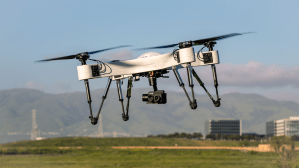
Image Credits: Impossible Aerospace |
Uncrewed plane
|
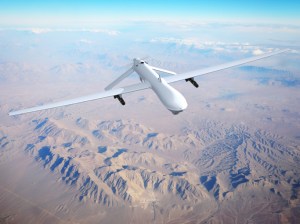
Image Credits: alxpin (opens in a new window) /Getty Images |
Constellation of LEO satellites
|
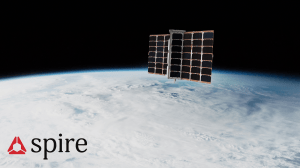
Image Credits: Spire Global |
GEO satellite
|
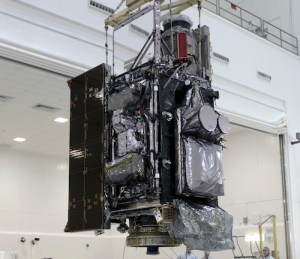
Image Credits: NASA/Leif Heimbold (opens in a new window) / Wikimedia Commons (opens in a new window) under a CC BY-SA 2.0 (opens in a new window) license. |
The solutions above are optimized for other types of critical missions. For example, drones are great for monitoring crops or inspecting infrastructure (as Drone Deploy software enables) or delivering emergency medical supplies (which Zipline and Google Wing are doing). Remotely-operated planes like General Atomics MQ-1 Predator have offensive military applications.
Constellations of LEO satellites in space, like Spire Global, can provide maritime, aviation and weather monitoring and prediction, or take photos of the world, as Planet Labs does. Lastly, GEO satellites can also be used for monitoring weather, communication and surveillance, but at a high level, not localized.
Possible future solutions
There are a handful of companies working on solutions specifically optimized for the mission of loitering over a single point. These solutions include balloons, blimps and HALE (high-altitude long endurance) platforms in the stratosphere.
Balloons

Image Credits: WorldView
Companies like Loon, WorldViewand WindBorne use air currents in the stratosphere to loiter over a single point. Their platforms have no propulsion on board and the structure consists of two balloons, a lift and a ballast balloon. The lift balloon contains either helium or hydrogen and is sealed with special UV-coated material. They use a compressor to add or remove air from the ballast balloon so that it becomes lighter or heavier to make the balloon go up or down depending on wind speed and direction and which air current they would like to ride.
- Pro: You cannot see these balloons from the ground with the naked eye or with most types of current ground-based tracking systems. They are fairly cheap, can be launched easily and can loiter over a single area for days or even months at a time.
- Con: Without propulsion, balloons are difficult to navigate through intense stratospheric winds, so it might be hard to precisely navigate and keep the balloons over the specific area of interest. The balloons are not recoverable when the flight terminates, although when the balloon bursts and returns to Earth you might be able to recover the payload.
Blimps
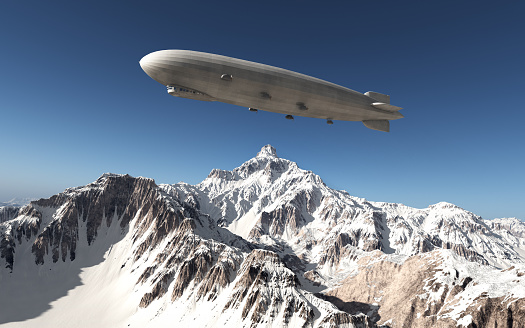
Image Credits: MR1805 (opens in a new window) / Getty Images
- Pro: They are fairly large so they can carry heavier payloads and provide more power to the payload. You can re-land the entire platform to either fix or recover the payload, and launch it multiple times.
- Con: They can be seen from the ground because they are so large, which makes them vulnerable to being shot down. Companies like Sceye and Altaeros are using the Goodyear Blimp with some tech upgrades. Their airships either have propulsion or are tied to the ground below, so they can better control where they are going, and they have upgraded UV and ozone-resistant skin.
HALE fixed-wing
Companies like Zenith and Skydweller are working on high-altitude long endurance (HALE) fixed-wing platforms. These high-aspect-ratio aircraft (which means long but slender wings) are powered by sunlight hitting the solar panels on the wings. The power that is generated can either power the plane and payload or be stored in the batteries. Therefore, if enough power is generated and stored during the day to last throughout the night, the plane can fly indefinitely.
- Pro: They can be precisely controlled by a pilot.
- Con: They have limited power for the payload, as most of the power generated is needed to power the aircraft.
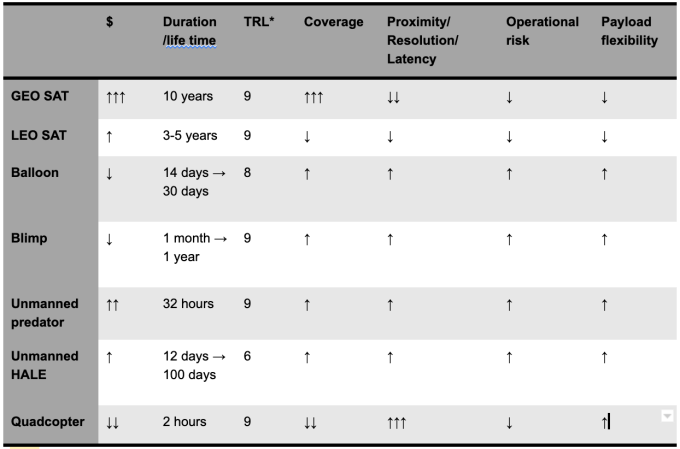
*TRL: technology readiness level
For all of these platforms, there will be additional challenges in the areas of manufacturing and mission management. The platforms need to be manufactured and launched cheaply, quickly and reliably. This takes time and money. Additionally, there are issues relating to who will monitor the platforms once they are in the stratosphere — the company that built the platform or the customers whose payload the platform is holding?
Another issue that platforms that operate in the stratosphere will face relates to who regulates the stratosphere. Obviously, putting and operating platforms in the stratosphere raises a number of regulatory and legal questions that will have to be resolved.
I believe there is enough room in this market (and certainly in the stratosphere) for all of these platforms to be successful. They complement existing platforms such as drones and satellites and, for certain critical missions, can be more effective and efficient than their counterparts that operate in the airspace or in LEO/GEO.
- Details
- Category: Technology Today
Read more: The space in between: The stratosphere
Write comment (92 Comments)Page 1055 of 1419

 20
20





